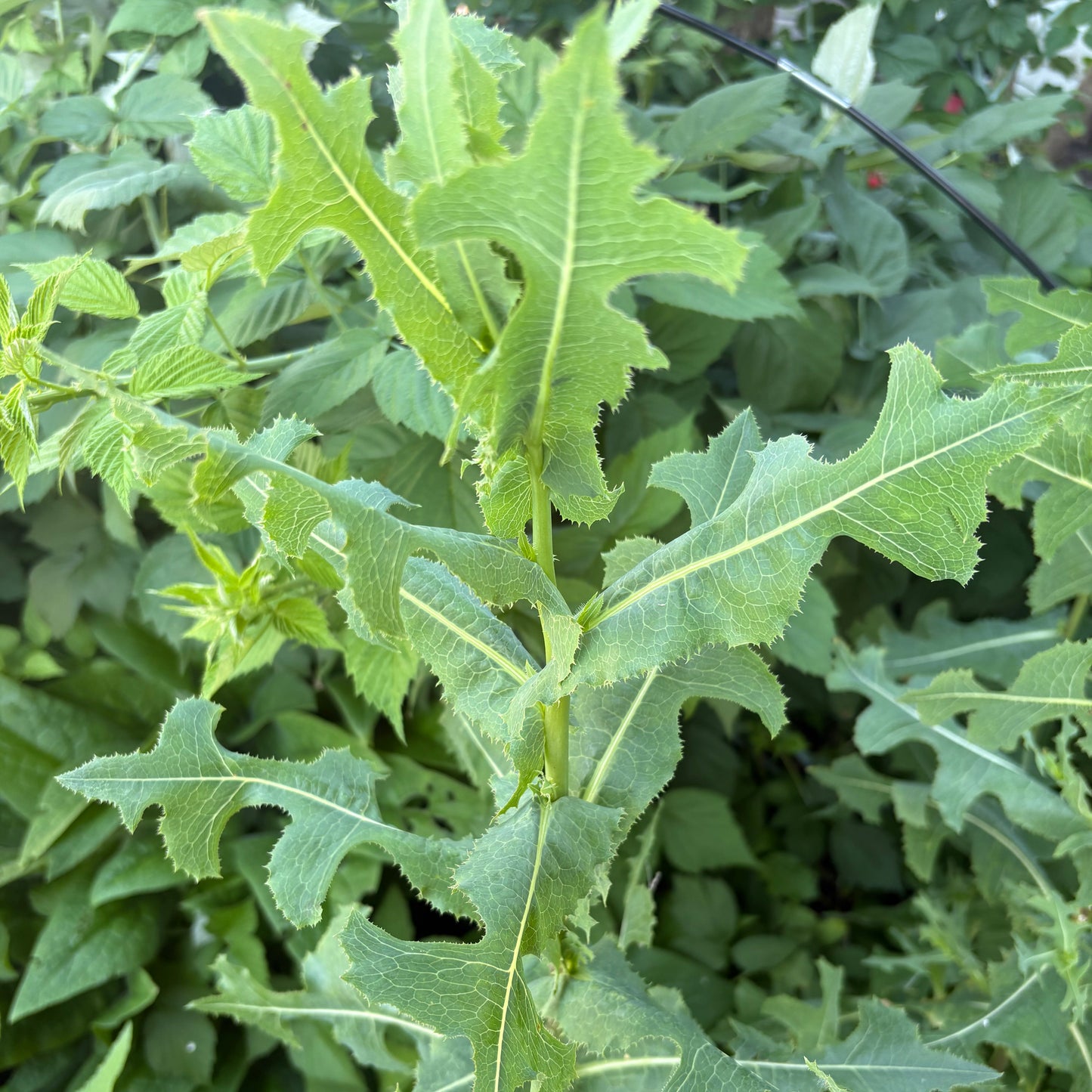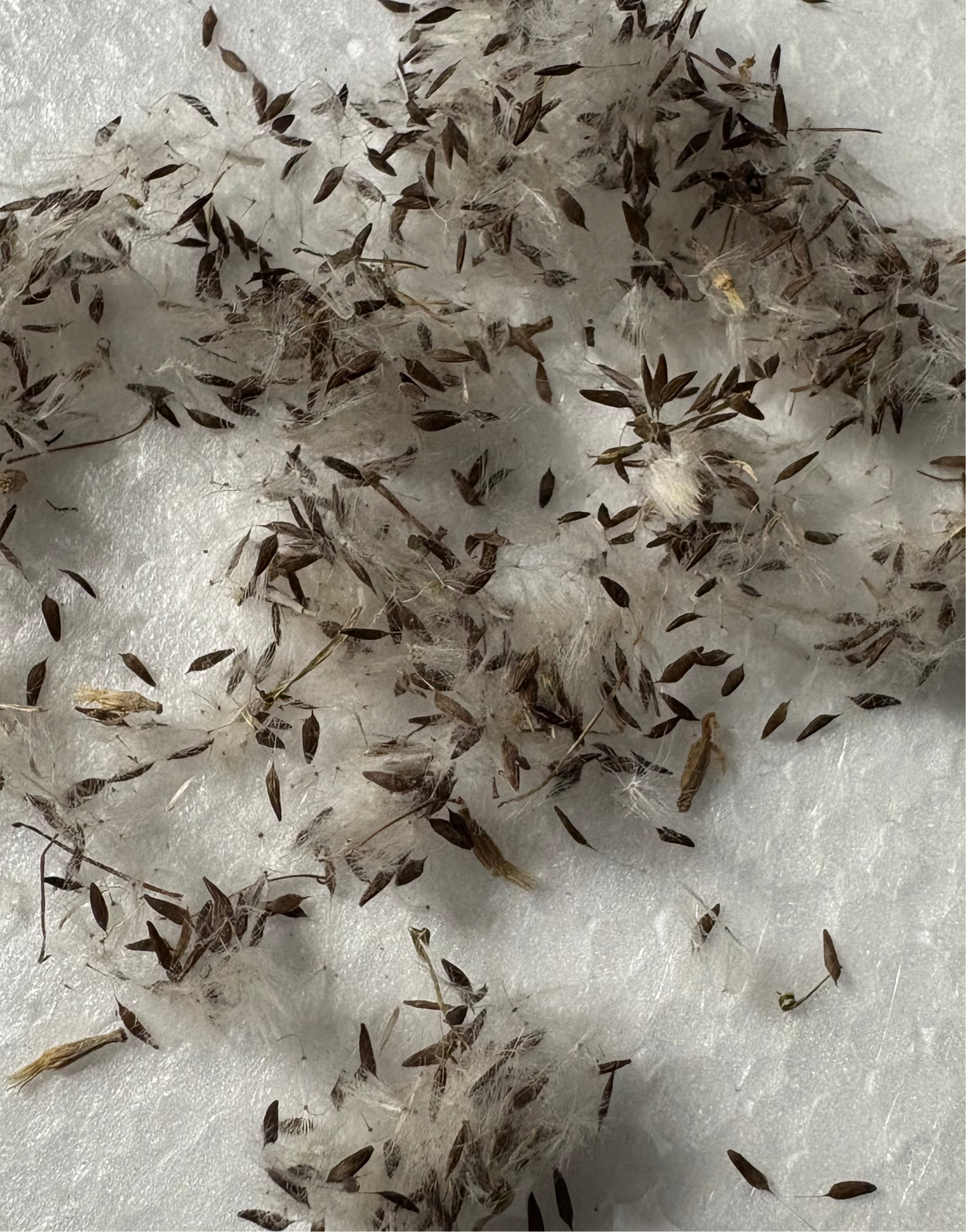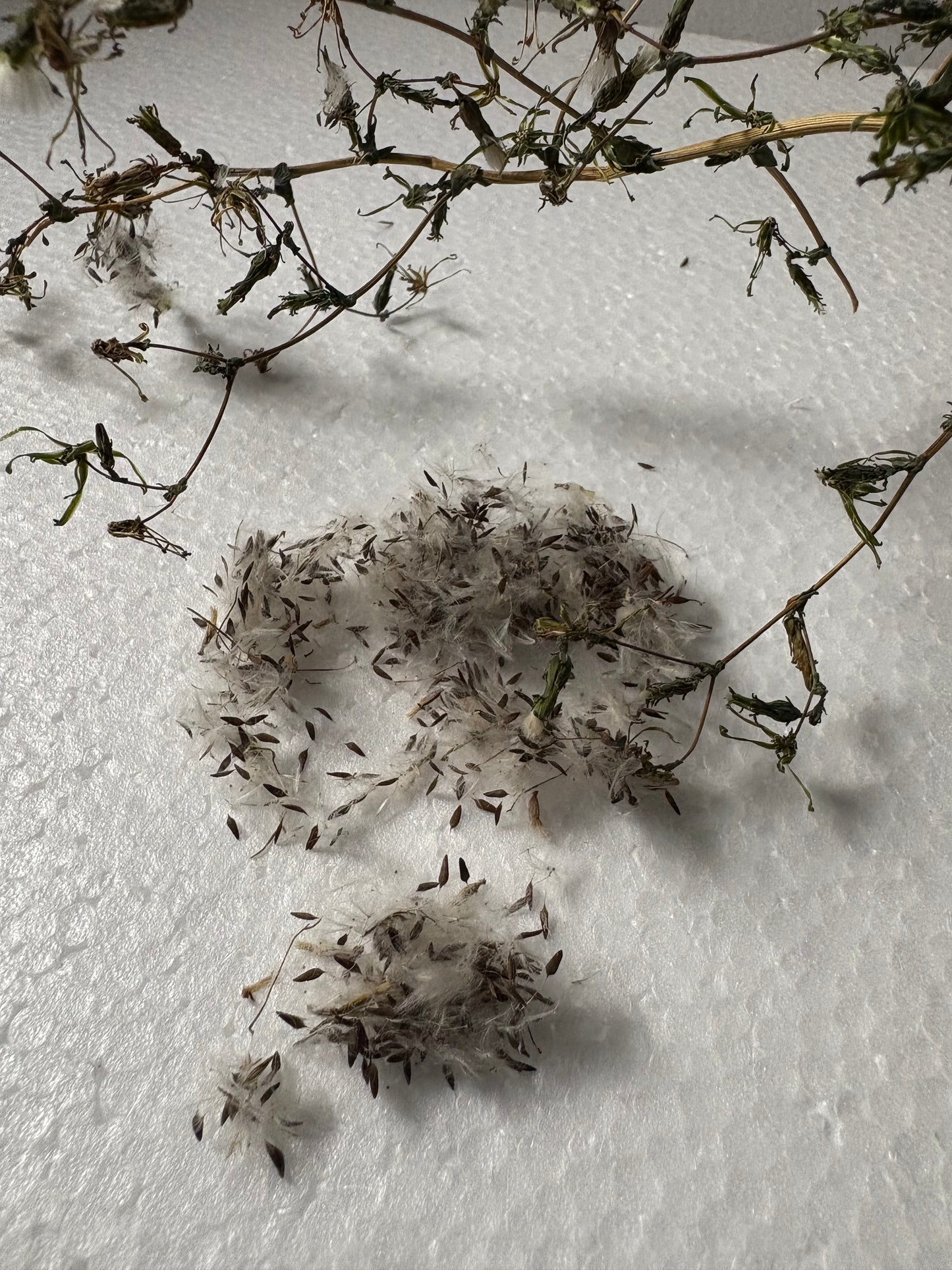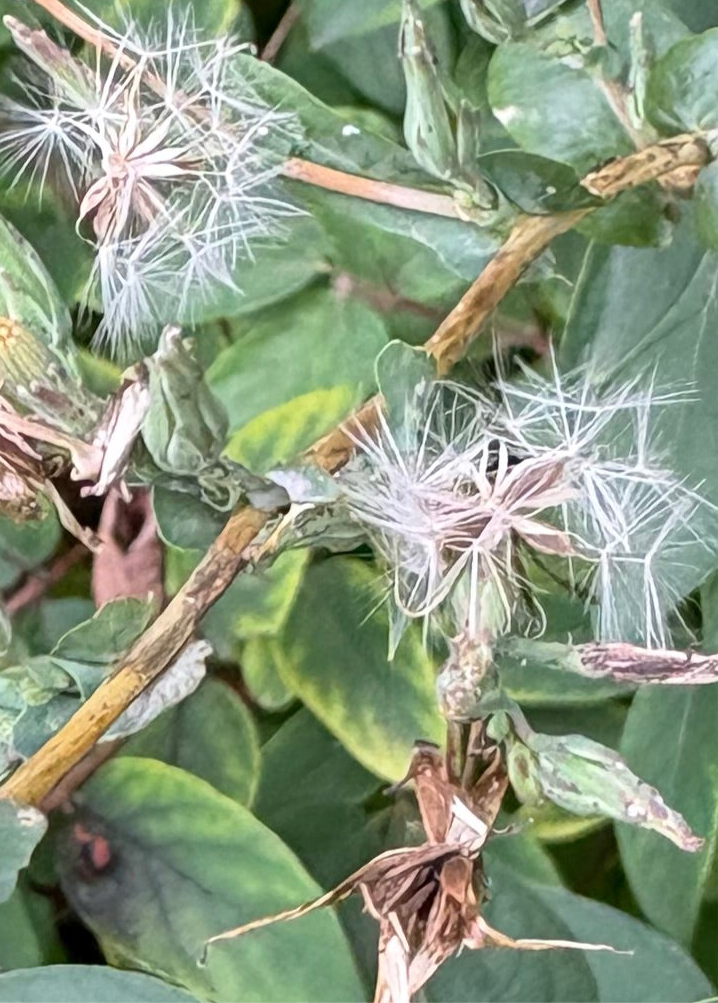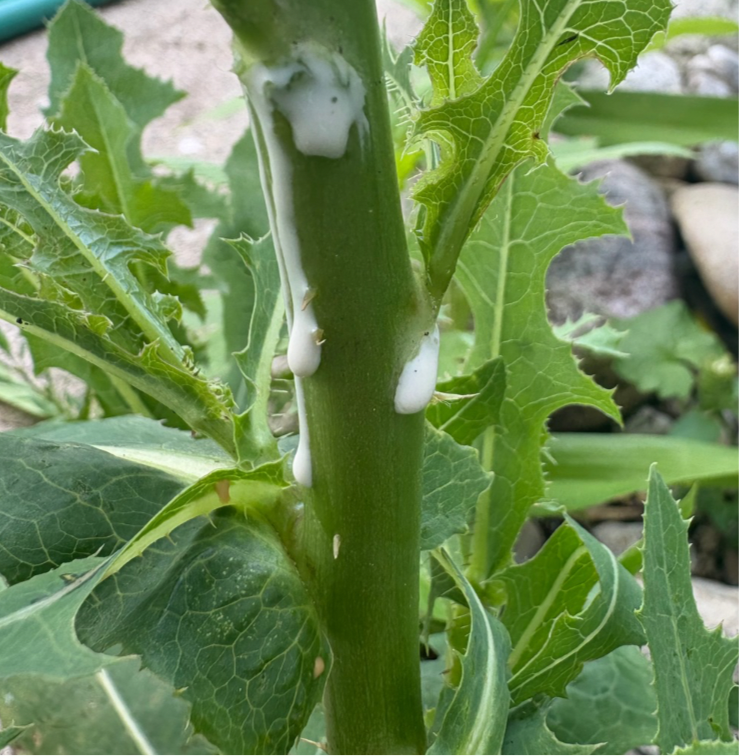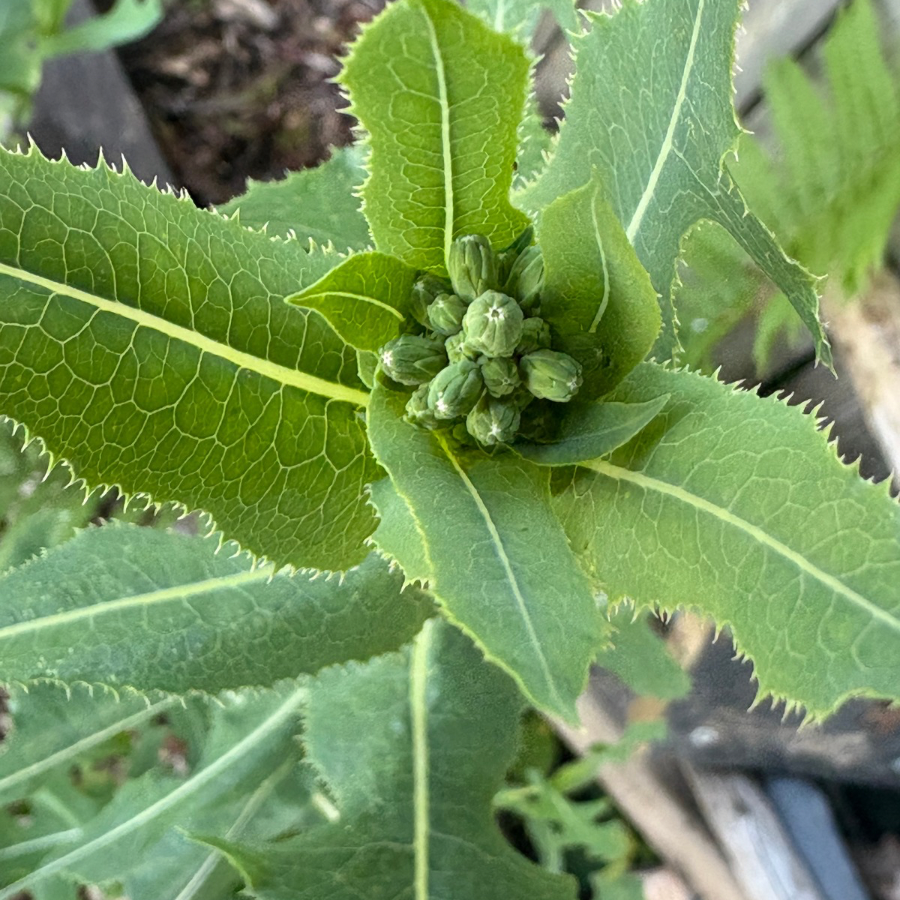America's Dairyland Tallow Co.
Wild Lettuce Seeds - Natures Opium
Wild Lettuce Seeds - Natures Opium
Couldn't load pickup availability
Wild Lettuce Seeds
"Opium Lettuce"
(Lactuca virosa)
You will receive 50+ freshly dried wild lettuce seeds. Each plant can produce hundreds of seeds that readily reseed themselves. Seeds are non-GMO, untreated heirloom.
Grow your own Wild Lettuce — a hardy biennial traditionally valued for its tall stalks, serrated leaves, and milky sap. Known historically in herbal traditions, wild lettuce is as striking in appearance as it is meaningful in folk use.
Our seeds are hand-harvested from strong, wild plants, then carefully dried and stored in airtight jars prior to shipping to preserve their natural vitality.
At America’s Dairyland Tallow, we also offer freshly dried wild lettuce leaves — perfect if you’d rather enjoy the herb while you are waiting to harvest your own.
Fun Fact: Wild lettuce has been nicknamed “opium lettuce” in herbal lore (though it does not contain opiates). Its milky sap has long been appreciated in traditional practices.
🌿Mild Pain Relief
- Historically called “opium lettuce” because its milky latex (lactucarium) was used as a natural sedative and pain-relieving substance.
- Used for headaches, joint discomfort, muscle pain, and menstrual cramps.
😴 Relaxation & Sleep Support
- Traditionally taken to calm restlessness, promote sleep, and ease tension.
- Often used as a milder alternative to stronger sedatives.
💨 Cough & Respiratory Support
- Some traditions used it to soothe coughs, bronchial irritation, and asthma-like symptoms.
💭 Calming the Nervous System
- Historically used for anxiety, stress, and nervous irritability.
⚠️ Important Notes:
- Wild lettuce does not contain opiates, but its latex can have a strong bitter taste and sedative-like properties.
- Overuse can cause nausea, dizziness, or stomach upset.
- Best used with caution, and always research preparation methods thoroughly.
- Not recommended for pregnant or breastfeeding women.
How to Plant Wild Lettuce?
- When to plant: Early spring or late fall (cold stratification improves germination).
- Where to plant: Full sun to partial shade; thrives in disturbed soils, field edges, or wild garden borders.
How to plant:
- Scatter seeds on the soil surface; do not bury, as light aids germination.
- Water lightly and keep moist until sprouts appear (7–14 days).
- Thin seedlings to 12–18 inches apart once established.
Growing Notes?
- Biennial lifecycle:
- Year 1: Forms a rosette of jagged green leaves.
- Year 2: Sends up a tall stalk (up to 6–8 feet) with clusters of small yellow flowers.
- Self-seeds easily once established.
- Prefers low-maintenance conditions and will naturalize if allowed.
Why Grow Your Own Wild Lettuce?
-
Herbal Tradition at Home
Wild lettuce has a long history in herbal practices, particularly for its leaves and milky sap. Growing your own provides peace of mind about quality and sourcing. -
Fresh, Homegrown Supply
Harvest leaves as needed and decide your own drying and storage methods for optimal freshness and potency. -
Pollinator-Friendly
Its small yellow flowers attract bees, butterflies, and other beneficial insects. -
Self-Sufficient & Hardy
Once established, wild lettuce often returns year after year by reseeding itself. -
Unique Garden Presence
With its tall, statuesque form and serrated leaves, wild lettuce makes a bold statement in gardens, herbal patches, or naturalized areas.
- Whether you’re interested in wild lettuce for its herbal legacy, pollinator benefits, or wild beauty in the garden, growing it yourself is a rewarding way to keep tradition alive.
- Wild lettuce has a long history in traditional herbal medicine, though it’s important to note that it is not FDA-approved to diagnose, treat, cure, or prevent any disease.
Share
